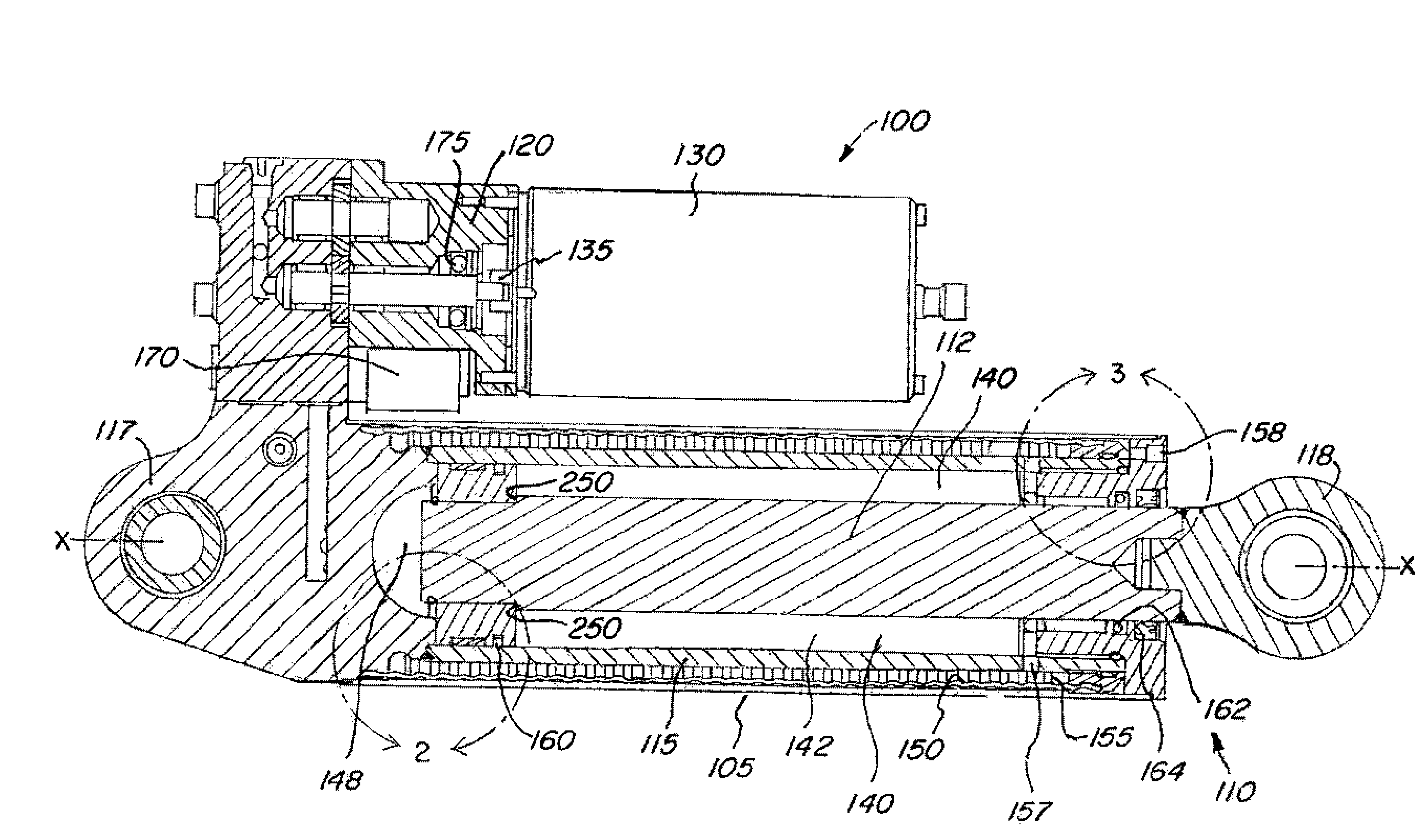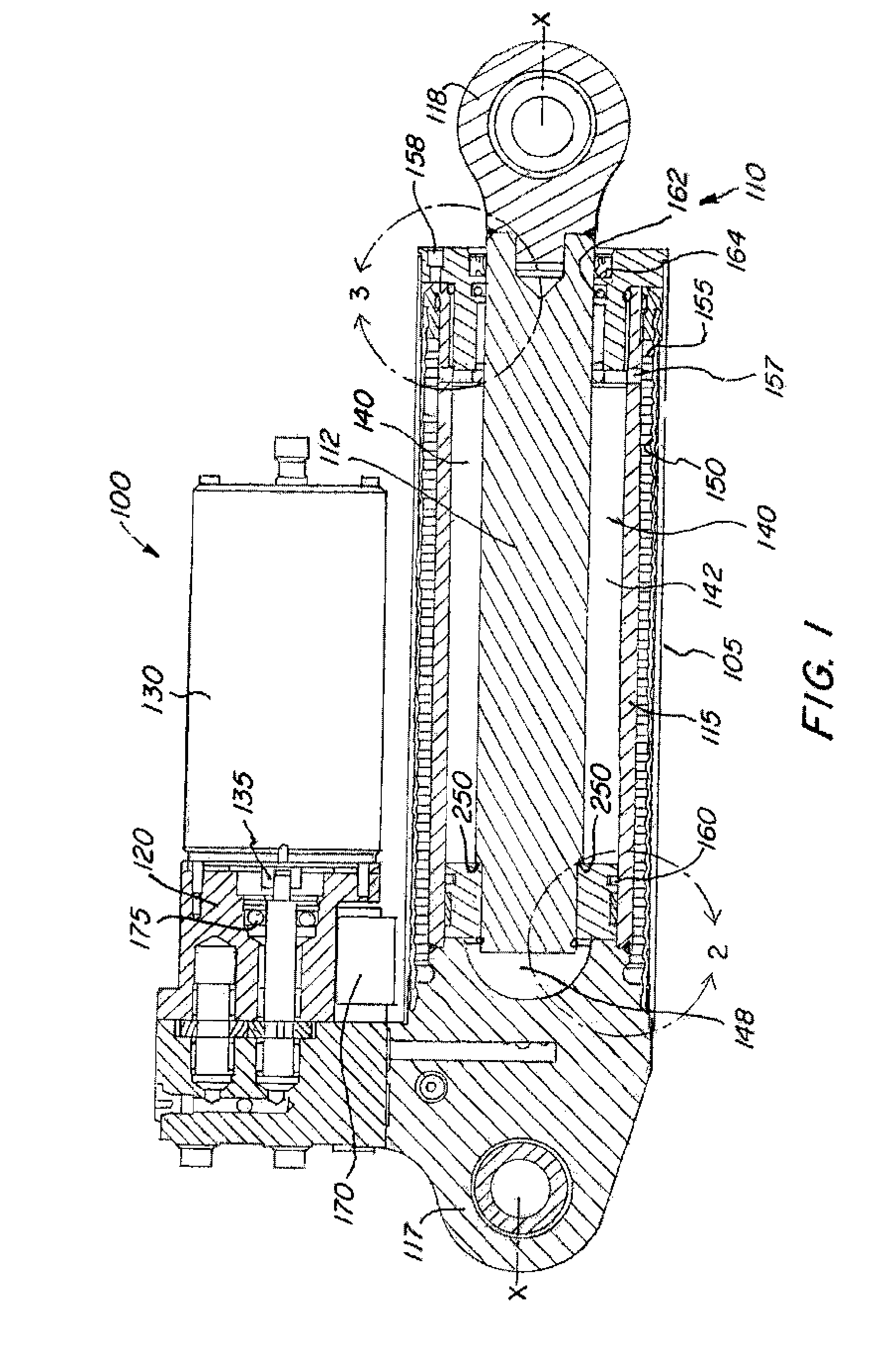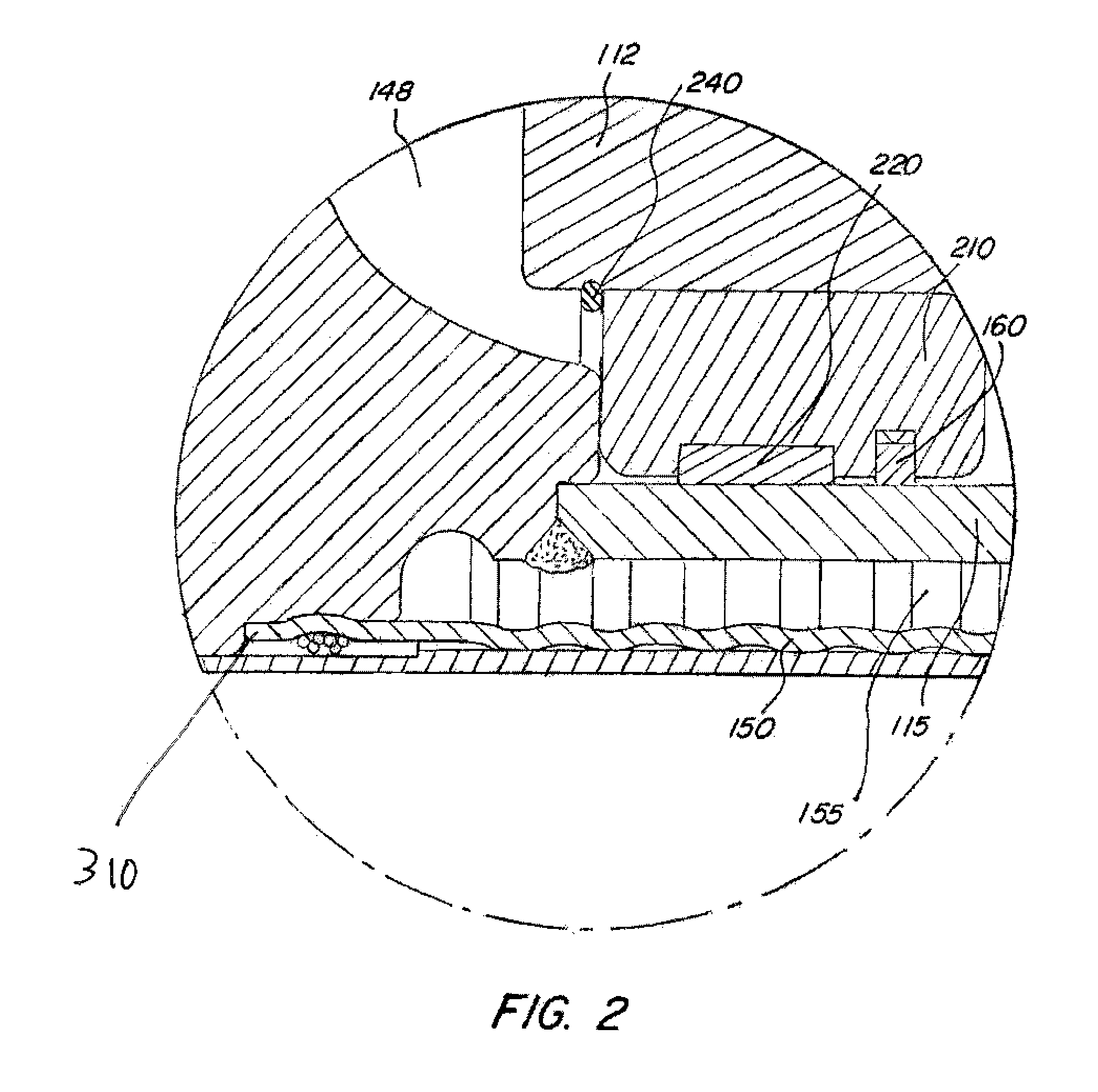Point Of Use Actuator
a point-of-use actuator and actuator technology, applied in the direction of servomotor components, machines/engines, servomotor circuits, etc., can solve problems such as leaking hydraulic fluids, potential challenges, safety and environmental problems, etc., and achieve the effect of efficient space saving advantages
- Summary
- Abstract
- Description
- Claims
- Application Information
AI Technical Summary
Benefits of technology
Problems solved by technology
Method used
Image
Examples
Embodiment Construction
[0060]Referring to FIG. 1, a hydraulic system 100 in accordance with the present invention is shown. Hydraulic system 100 eliminates the need for external hoses that are susceptible to damage and leaks. System 100 efficiently contains space saving advantages from the integration of components.
[0061]The hydraulic system comprises an actuator 110 capable of moving under drive from hydraulic fluid 1000 (not shown), a pump 120 mounted to the actuator 110 for moving fluid 1000, a motor 130 driving the pump 120, and a non-vented reservoir 140 that provides fluid 1000 to extend the actuator 110. The actuator 110 contains an actuator rod 112, actuator tube 115, and two mounting provisions 117 and 118. When the actuator is actuated, the actuator rod 112 moves in an axial direction parallel to the longitudinal axis X of the actuator 110.
[0062]The rod side volume of the reservoir 140 is shown as 142. The bladder volume 155 is also next to volume of reservoir 140. Thus, some of the volume of th...
PUM
 Login to View More
Login to View More Abstract
Description
Claims
Application Information
 Login to View More
Login to View More - R&D
- Intellectual Property
- Life Sciences
- Materials
- Tech Scout
- Unparalleled Data Quality
- Higher Quality Content
- 60% Fewer Hallucinations
Browse by: Latest US Patents, China's latest patents, Technical Efficacy Thesaurus, Application Domain, Technology Topic, Popular Technical Reports.
© 2025 PatSnap. All rights reserved.Legal|Privacy policy|Modern Slavery Act Transparency Statement|Sitemap|About US| Contact US: help@patsnap.com



